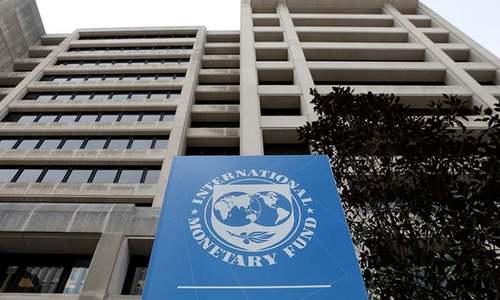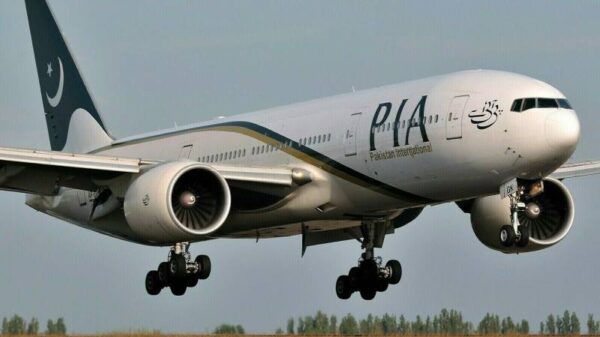ISLAMABAD: The IMF expects Pakistan’s GDP to increase by 4% in 2022, up from 5.6% in 2021, and inflation to jump from 8.9% in 2021 to 11.2 percent in 2022, according to IMF projections.
Global GDP growth is expected to slow to 4% in 2022 from 5.6% in 2021 and then stabilise at 4.2% in 2023, according to the IMF’s latest World Economic Outlook (WEO) study.
Inflation is expected to rise from 8.9% in 2021 to 11.2% in 2022 before falling to 10.5% in 2023, according to the Fund.
For the conclusion of the term, which is elaborated as monthly year-over-year changes and quarterly in several countries, the research projects consumer prices to be 12.7% higher in 2022 and 8.2% higher in 2023.
It is predicted that in 2022, the current account balance would be -5.3 percent of GDP, down from -0.6 percent in 2021 and that it will be -4.1 percent in 2023.
According to the International Monetary Fund, the unemployment rate in 2022 will be seven percent, down from 7.4 percent in 2021 and 6.7 percent in 2023.
There has been a severe humanitarian disaster resulting from the conflict in Ukraine, according to the research. In 2022, the conflict will have a severe impact on global growth, resulting in a significant recession.
Global economic growth is expected to decline from 6.1% in 2021 to 3.6% in 2022 and 2023, according to current estimates. This is a decrease of 0.8 and 0.2 percentage points from the January World Economic Outlook Update for 2022 and 2023, respectively. Global growth is expected to slow to 3.3% by 2023 at the earliest.
However, the impact of European countries’ decisions to wean themselves off Russian energy and embargoes announced until March 31, 2022, is factored into the baseline, and the health and economic effects of the pandemic diminish by 2022, this forecast assumes that the conflict remains confined to Ukraine. It also assumes that further sanctions against Russia do not exempt the energy sector. Employment and output are expected to continue below pre-pandemic levels until 2026, with a few exceptions.
Economic production is projected to be lower than pre-pandemic levels for much of the projection horizon in emerging markets and developing nations because of a lack of government help and a slower vaccination rate. Unusually high levels of uncertainty surround this prognosis, and several dangers to the global outlook—including a likely worsening of the conflict, an increase in sanctions on Russia, sluggish progress in China, and a new, more deadly pandemic strain—dominate the view.
As a result of war-induced rises in commodity prices and increasing pricing pressures, inflation is predicted to remain elevated longer than previously expected.
A 1.8 and 2.8 percentage point increase in inflation has been forecasted for advanced economies and emerging markets and developing economies in 2022, respectively. Uncertainty persists in the baseline projection for price inflation, notwithstanding the progressive correction of supply demand imbalances and a minor increase in labour supply.
Things might become a lot worse before they get better. Commodity price rises and worsening supply-demand mismatches, especially those caused by conflict, might contribute to higher inflation and higher inflation expectations, which could lead to faster wage growth. Increasing interest rates and exposing developing economies’ debt vulnerabilities will be necessary if central banks detect signals of the excessive inflation in the medium term.
For example, the International Monetary Fund (IMF) noted that bank holdings of sovereign debt vary significantly across emerging markets, ranging from about 5 percent of banking sector assets (for example, in Chile and Peru) to more than 25 percent of banking sector assets (for example, in Russia, Belarus, and Kazakhstan) (for example, in Brazil and Pakistan). Since the global financial crisis, the exposure of developing market banks to government debt has increased in India, Indonesia, and Pakistan, particularly.
Works at The Truth International Magazine. My area of interest includes international relations, peace & conflict studies, qualitative & quantitative research in social sciences, and world politics. Reach@ [email protected]










